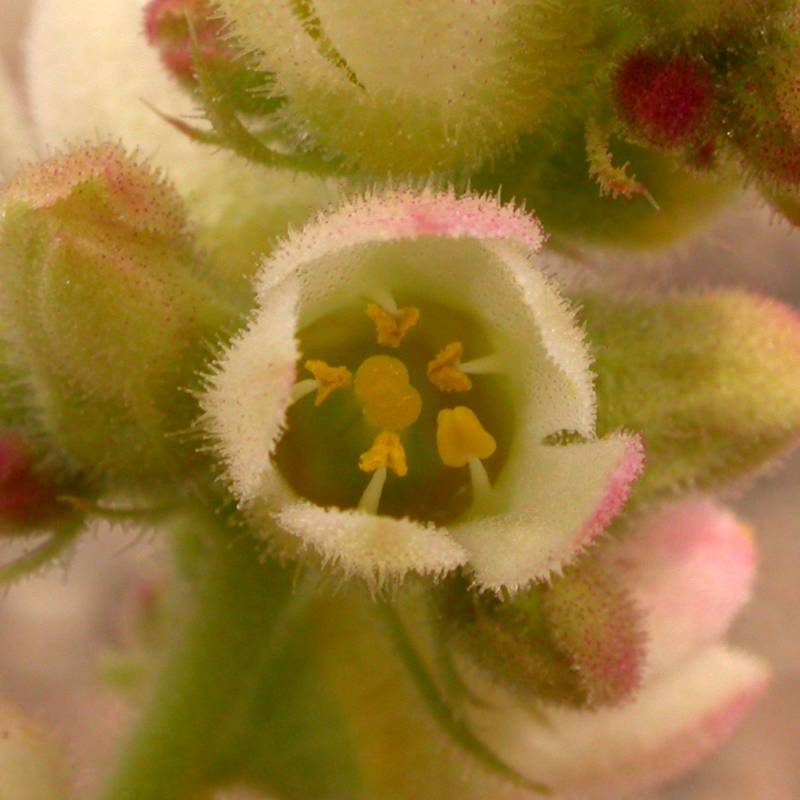Hosted by the University of Washington Herbarium, Burke Museum
Publication: Fl. Bor.-Amer. 1: 236. 1832.
Origin: Native
Herbarium search: CPNWH
Notes: FNA8: "Some features of Heuchera cylindrica show great variation, including the type and amount of indument on the leaves, petioles, and stems, lobation and shape of leaf base, difference in flower size, complicated by rapid growth of the hypanthium during and after anthesis, change in filament-to-anther ratio before and after anthesis, relative degree of development of bracts of flowering stems, degree of disc development, and relative length and degree of divergence of the beaklike styles of the fruit. We agree with P. K. Holmgren and N. H. Holmgren (1997) that there is no value in recognizing infraspecific taxa in H. cylindrica until a more thorough phylogenetic study can show some correlation between morphological variation and infraspecific categories.
The Blackfoot Indians used decoctions of roots of Heuchera cylindrica for diarrhea and as an astringent. The Flathead infused or chewed roots for diarrhea and stomach cramps. The Kutenai used decoctions of roots for "aching bones" and tuberculosis. The Okanagan-Colville used decoctions of roots as a tonic for the "changing of the blood" and, especially for children and babies, to rinse out the mouth for sore throats. They applied a poultice of mashed, peeled roots to sores and cuts, and mixed roots with puffball spores as a salve for diaper rash. The Shuswap Indians took decoctions of leaves and roots for diarrhea. The Thompson Indians applied chewed leaves and roots on sores or wounds and drank an infusion of roots for liver trouble (D. E. Moerman 1998)."
Last updated 4/27/2020 by David Giblin.

